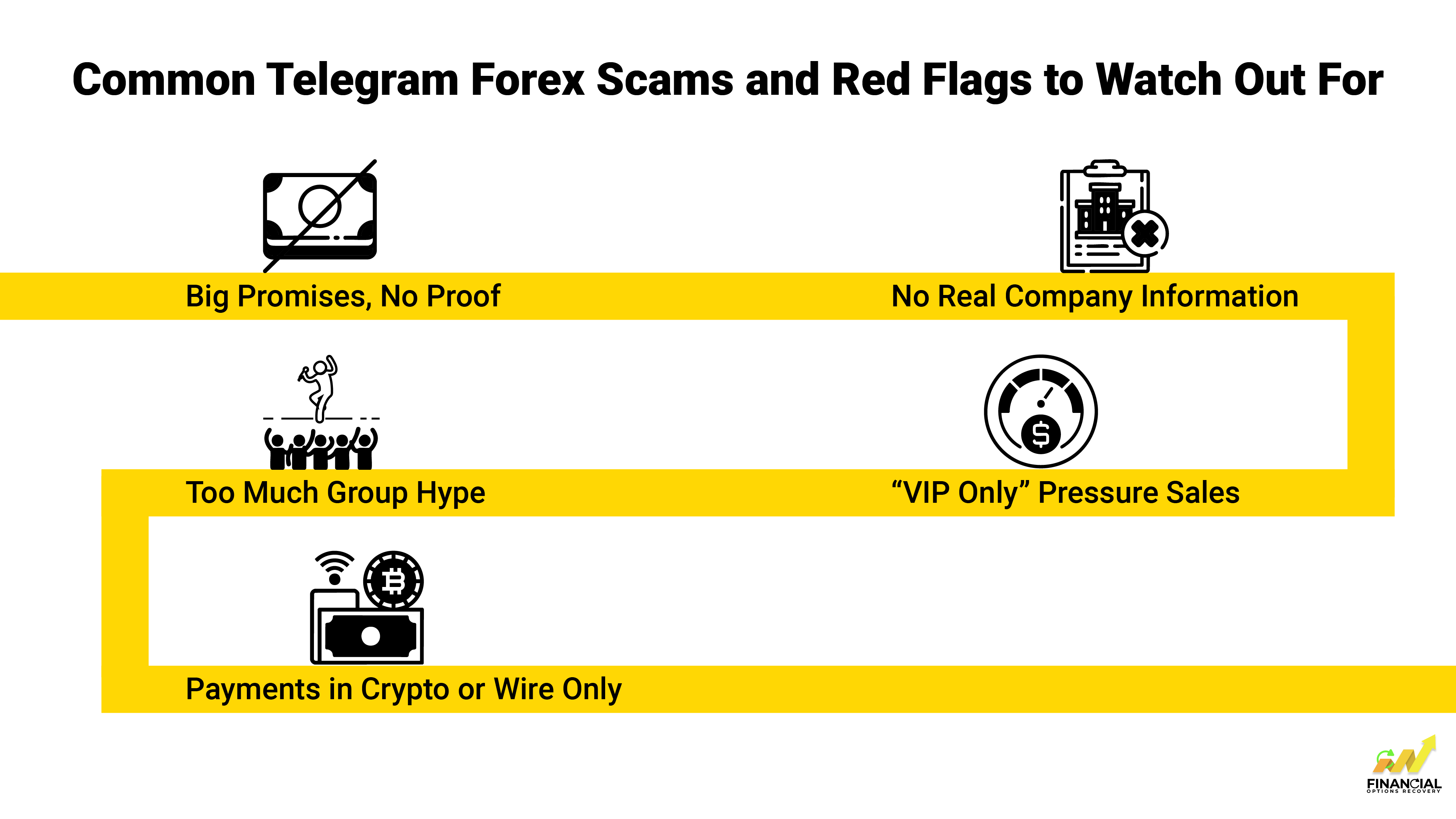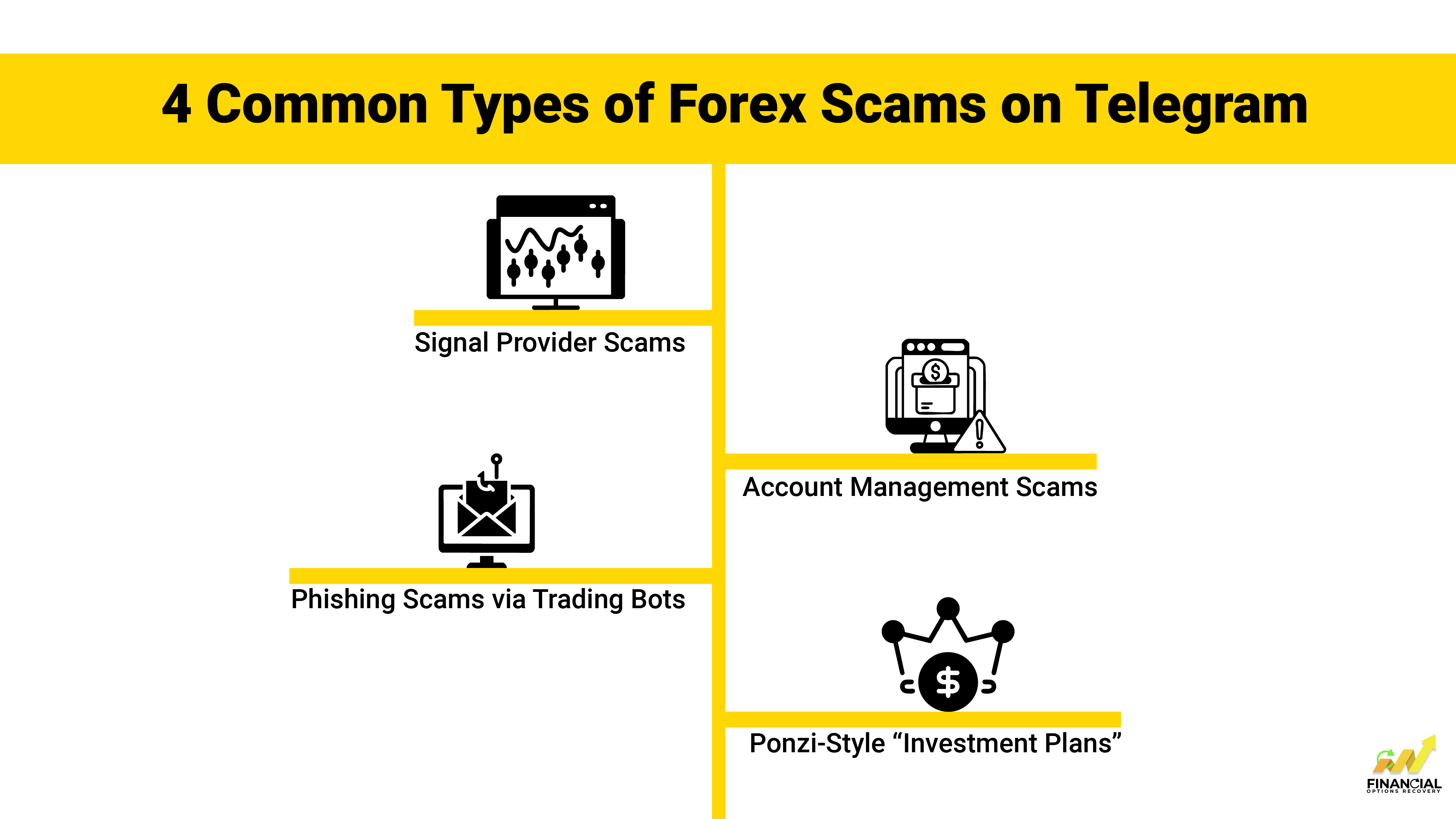
You open Telegram. A message pops up, “Turn $500 into $5,000 in just days. Join our VIP Forex group today.”
It sounds bold, but not impossible. After all, you’ve seen screenshots of winning trades, real-time signals, and even glowing testimonials from other traders. Maybe this is your chance.
That’s how it begins for most people. Not with greed, but with curiosity. A simple click, a small investment, a little trust, and then nothing. No response. No refund. No returns. Just a vanished admin and a lesson learned the hard way.
Telegram has attracted lots of forex trading communities, but the dream of quick profits often blinds people to the warning signs that are right in front of them.
In this blog, you’ll learn how these scams actually work, why they’re so convincing, and how to protect yourself from falling into a trap that’s fooled thousands.
Let’s get into it.
Table of Contents
It doesn’t take much to get pulled into a One message, one invite, one group that looks promising, and suddenly, you’re part of a trading community that seems to be making money every single day.
But behind all the charts and trading talk, there’s often something else going on.
Here’s how these scams usually work:
It starts with a Telegram group sharing free forex signals. The chat is active, the admin sounds confident, and people in the group keep thanking them for “amazing trades.” It looks like everyone’s making money, except you.
The truth? Most of those messages are fake. The conversations, the success stories, and the usernames are often scripted or created by the scammers themselves to make everything seem legit.
Next, they start showing off their screenshots of huge profits, perfect entry points, and trades that never seem to go wrong. It’s impressive, maybe even exciting.
But it’s all staged. Many of those screenshots are either edited or taken from demo accounts. It’s not about showing you real results; it’s about convincing you they know what they’re doing.
Once you’re interested, they offer access to a private “VIP group,” supposedly where the real strategies are shared. For a fee, of course. It sounds like a small investment for big returns.
But after you pay, you’re either given vague, random signals that don’t work, or nothing at all. In many cases, they’ll just stop responding.
Sometimes, they take a different route, offering automated trading bots or assigning you a “personal trading expert”, an account manager who promises to trade for you.
At first, it might look like your money is growing; they even show you dashboards with fake numbers. But when it’s time to withdraw, you hit a wall. Suddenly, there are delays, extra fees, or suspicious problems with your account. And your money? Gone.
What really makes these scams work isn’t just tech; it’s psychology. They play on your hopes, your urgency, and your fear of missing out.
They want you to act fast, before you think twice. And that’s what makes them dangerous, not because they’re clever, but because they’re convincing.
You don’t need to be a trading expert to spot a scam, just someone who knows what feels off. The problem is, these Telegram forex scams are designed to look just real enough to fool you.

But if you know what to look for, the warning signs are always there. Here are the red flags that should make you pause or, better yet, walk away.
Double your money in 5 days!
Turn $200 into $2,000 guaranteed!
Messages like this are always the first red flags. No real trader will promise you guaranteed profits. Markets move, risks exist, and nobody wins every single time, no matter how confident they sound.
Try asking them who they are? What’s their company name? Are they licensed? Where are they based? When the answers are vague, that’s a red flag waving in your face.
Scammers avoid accountability. That’s why their “business” is usually just a Telegram username and a few flashy charts.
Scammers love urgency. They’ll tell you there are only a few VIP spots left or that the current rate is a “limited-time offer.” It’s a tactic to rush you into paying without thinking it through. If someone’s pushing you to act fast with your money, stop and ask why.
Ever notice how everyone in the group seems overly excited and grateful? That’s not a coincidence. Many of these groups are filled with fake accounts constantly posting “thanks boss!” or “another win!”It’s all staged to make the group look successful and active, when in reality, it’s all smoke and mirrors.
If the only way to pay is through crypto or a direct wire transfer, that’s a red flag. Scammers love these methods because once your money’s sent, there’s no getting it back. No credit card disputes, no chargebacks, no recourse.
In short, if something feels rushed, vague, or just too good to be true, it probably is. Don’t let hype cloud your judgment.
Telegram is full of forex groups that look helpful on the surface, people sharing trade tips, promising big profits, and offering to help you grow your money. But not everything is as real as it seems.
Many of these groups are run by scammers. They know how to build trust quickly, and they use convincing language to make you believe they’re legit. Some even send fake screenshots or pretend to be successful traders.

If you’re new to forex, or even if you’ve been trading for a while, it’s easy to fall for these traps. In this section, we’ll break down the most common scams you’ll find on Telegram, explain how they work, and share some simple ways to protect yourself.
How it works:
Scammers present themselves as expert traders offering high-accuracy forex signals. They build trust by sharing a few free trades that often appear profitable. Once you're hooked, they prompt you to pay for a “VIP” group, a monthly subscription, or lifetime access. After payment, either the signals stop performing, or you get ghosted entirely.
How to stay safe:
Rely on signal providers with proven third-party verified results.
Avoid any trader who won’t explain their trading strategy or refuses transparency.
Never base trading decisions on signals alone; always do your own analysis.
How it works:
These scammers offer to manage your forex account and promise consistent returns. They ask for direct access to your trading platform or funds. Initially, you might see what looks like impressive profits, but it’s often just manipulated data. When you ask to withdraw, you may face excuses, delays, or sudden “fees” until communication stops entirely.
How to stay safe:
Never give someone control over your trading account or personal funds.
Use regulated brokers and verified portfolio managers with clear contracts.
Stick to self-directed trading or work only with licensed professionals.
How it works:
Some Telegram trading groups use bots that copy legitimate services. These bots send messages or links claiming to offer trading tools, API integrations, or performance dashboards. Clicking these links often leads to fake login portals designed to steal credentials, API keys, or wallet access. For a deeper look at how these scams operate, check out our guide on Forex trading robot scams.
How to stay safe:
Never click on unsolicited links or connect your trading account to unknown bots.
Enable two-factor authentication (2FA) on all trading and financial platforms.
Use antivirus software and VPNs when engaging with trading groups online.
How it works:
These scams promise guaranteed returns, like ‘double your money in 10 days’, in exchange for upfront investment. Early participants sometimes receive payouts to create social proof. But the entire model relies on new investments to pay off earlier ones. Eventually, the scam collapses, and most users lose their funds.
How to stay safe:
Be skeptical of any investment that promises fast, fixed returns.
Don’t fall for testimonials or payment screenshots; they can be faked.
Remember: if it sounds too good to be true, it probably is.
Each of these scams plays on a slightly different angle of greed, trust, or convenience, but the goal is always the same: take your money and disappear.
Realizing you've been scammed can be upsetting, frustrating, and even embarrassing, but you're not alone, and you can take action. Here’s what you should do right away if you think you’ve fallen for a forex scam on Telegram:
Cut off communication with the scammer immediately. Don’t respond to follow-up messages, even if they claim they can help you recover your money; it’s often part of the same scam. At the same time, save all chat records, screenshots, payment receipts, and usernames. This information will be important when you report the scam or seek help later.
In the U.S., you can report the scam to several official agencies:
Reporting helps track scam activity and may support future investigations even if you don’t get an immediate response.
Some companies specialize in helping scam victims recover funds, especially when crypto wallets or wire transfers are involved. Be cautious, though; this space also has its own share of fake “recovery agents.” Make sure the service is credible, well-reviewed, and transparent about fees.
Scammers thrive on silence. One of the best things you can do is share your experience. Leave honest reviews, warn others in forums or trading communities, or talk to friends who might be at risk.
Your voice might help someone else avoid the same mistake.
Falling victim to a forex scam on Telegram doesn’t make you careless; it makes you human. These scams are designed to feel real and urgent, and many smart people have been caught off guard. What matters now is how you respond.
If you’ve lost money or feel something isn’t right, don’t wait. Acting quickly can make all the difference when it comes to recovering your funds and stopping further damage.
At Financial Options Recovery, we specialize in helping victims of online financial scams. Our team understands how these scams operate, and we’re here to guide you through the next steps with real support and proven solutions.
Reach out to a professional and reliable fraud recovery firm for a confidential consultation. Let’s work together to hold scammers accountable and help you move forward with confidence.
If a Forex Group promises guaranteed profits, pushes paid signals quickly, or avoids showing proof of real trading results, it’s likely a scam. Real traders are transparent, don’t promise returns, and won’t pressure you to invest or pay.
Even free forex signals can be risky. Some are just bait to get you into a paid group or to promote sketchy brokers. Use signals only as a reference, not as your sole reason to place trades.
Not all, but many trading bots are scams. Scammers use fake bots to steal your account details or redirect you to phishing websites. If a bot asks for login info, wallet keys, or API access, don’t share it.
Telegram allows anonymous accounts, private channels, and bots, making it easier for scammers to operate and harder for victims to trace them. It’s also full of trading communities where victims are easy to target for a forex scam.
VIP Signal groups are paid groups where scammers claim to share exclusive forex trading signals. They often show fake profits and testimonials to get you to pay. Once you join, signals are either of low quality or stop coming altogether.